
Paris, the City of Light, is one of the world’s most beautiful and popular cities. With its rich history, stunning architecture, and famous landmarks, Paris is a must-visit destination for anyone who loves culture, art, and food.
This travel guide will help you plan your trip to Paris, including the best time to visit, where to stay, what to see, and where to eat.
Table of Contents
- When to Visit Paris
- Getting to Paris
- Getting Around Paris
- Where to Stay in Paris
- What to See & Do in Paris
When to Visit Paris
Paris is a year-round destination, but the best time to visit is from June to August, when the weather is warm and sunny.
However, this is also the busiest time of year, with lots of tourists visiting the city. If you prefer to avoid crowds, consider visiting in the spring or fall, when the weather is pleasant, and the city is less crowded.
Winter can be a great time to visit if you don’t mind the cold and want to experience the city’s festive atmosphere during the holiday season.
Getting to Paris
Paris is served by two major airports, Charles de Gaulle and Orly, both of which are located outside the city.
The easiest way to get to your hotel from the airport is to take a taxi or a shuttle service, but you can also take public transportation.
The RER B train connects the airport to central Paris, while the Orlybus shuttle connects Orly Airport to the Denfert-Rochereau metro station.
If you’re traveling by train, Paris has six major train stations, including Gare du Nord, Gare de Lyon, and Gare Montparnasse.
Getting Around Paris
Paris is a great city to explore on foot, but if you need to take public transportation, the metro is the easiest and fastest way to get around.
The metro has 16 lines and over 300 stations, so reaching any part of the city is easy. You can buy single tickets, packs of 10 tickets, or a day pass, depending on how much you plan to use the metro.
A bus is also a good option if you want to see more of the city and don’t mind slower travel times. You can buy tickets from kiosks or vending machines or use a contactless credit card.
Where to Stay in Paris
Paris has a wide range of accommodations to suit every budget and taste. The Marais, Saint-Germain, and the Latin Quarter are great options if you want to stay in the city’s heart.
These neighborhoods are close to many of the city’s attractions, including Notre Dame, the Louvre, and the Eiffel Tower.
If you prefer a quieter, more residential area, consider staying in the 7th or 16th arrondissements, both of which are upscale and family-friendly. If you’re on a budget, the 10th and 11th arrondissements have a variety of affordable hotels and hostels.
What to See and Do in Paris
Paris is home to some of the world’s most famous landmarks and cultural attractions, so you won’t be short on things to see and do. Here are some must-see attractions in Paris:
The Eiffel Tower
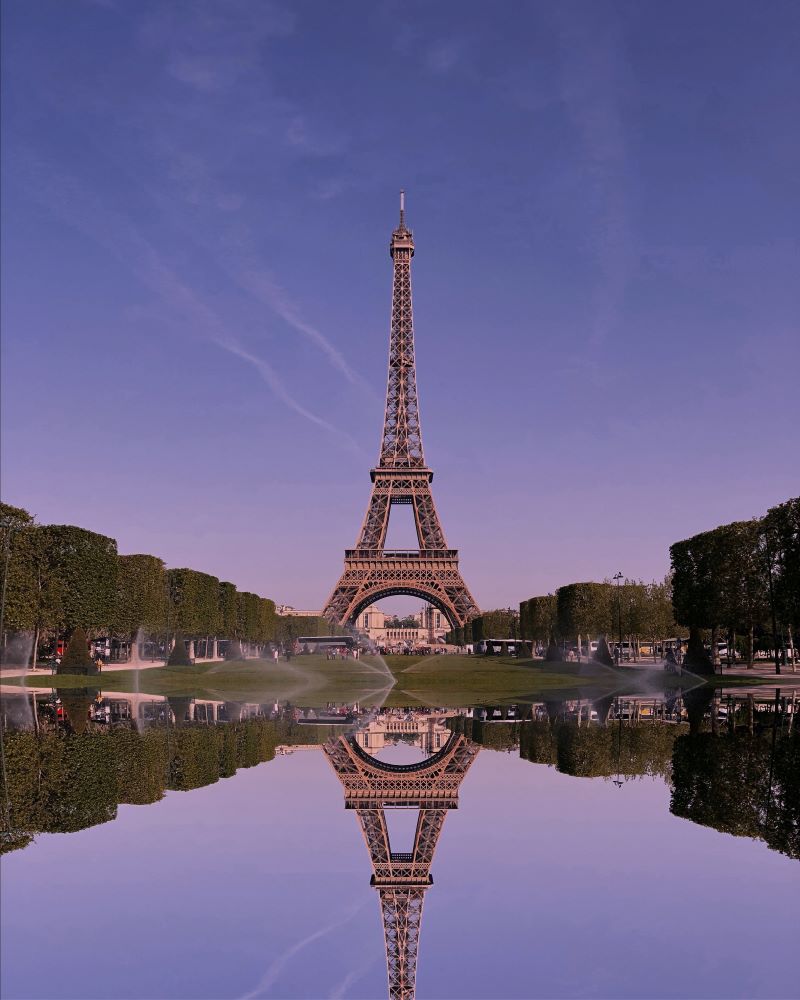
No visit to Paris is complete without a visit to the Eiffel Tower.
It was designed by the French engineer Gustave Eiffel and built in 1889 as the entrance arch to the 1889 World’s Fair.
The tower stands at a height of 324 meters (1,063 feet) and was the tallest man-made structure in the world at the time of its completion.
It held this record until the Chrysler Building was built in New York City in 1930.
The Eiffel Tower has three levels for visitors, each accessible by stairs or elevator.
The first and second levels have restaurants and observation decks, while the third level, which is the highest accessible point, offers stunning panoramic views of Paris.
Today, the Eiffel Tower is one of the most recognizable landmarks in the world and is visited by millions of people each year. It has also become a symbol of French culture and engineering prowess.
The Louvre
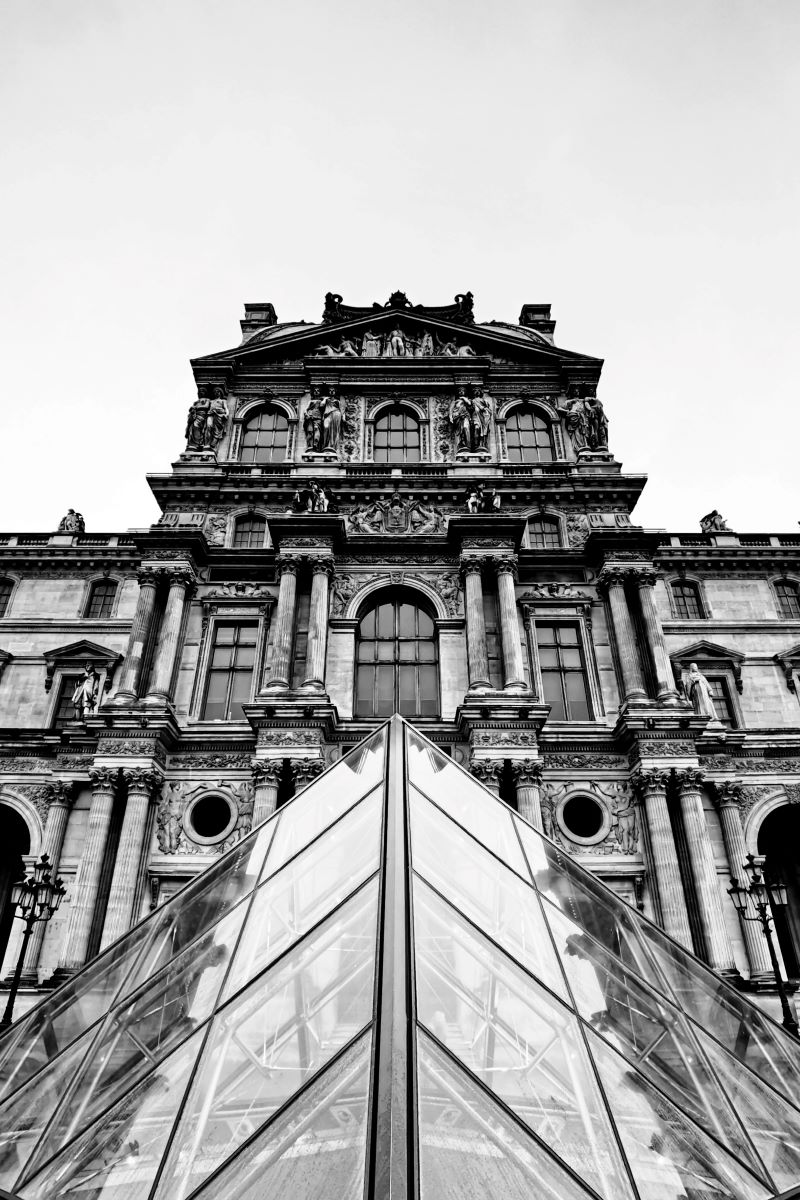
The Louvre is a world-renowned museum. It is one of the world’s largest and most visited museums, with a collection of over 38,000 works of art, including paintings, sculptures, and other artifacts.
The Louvre was originally built as a fortress in the late 12th century, but it was later converted into a palace for French kings.
In the late 18th century, during the French Revolution, the palace was transformed into a museum to showcase the royal collection of art.
Today, the Louvre is home to some of the world’s most famous works of art, including Leonardo da Vinci’s Mona Lisa, the Winged Victory of Samothrace, and the Venus de Milo.
The museum’s collections cover a vast range of art and artifacts from ancient times to the present day, with works from all corners of the globe.
In addition to its collections, the Louvre is famous for its stunning architecture, including the iconic glass pyramid in the central courtyard.
Notre Dame
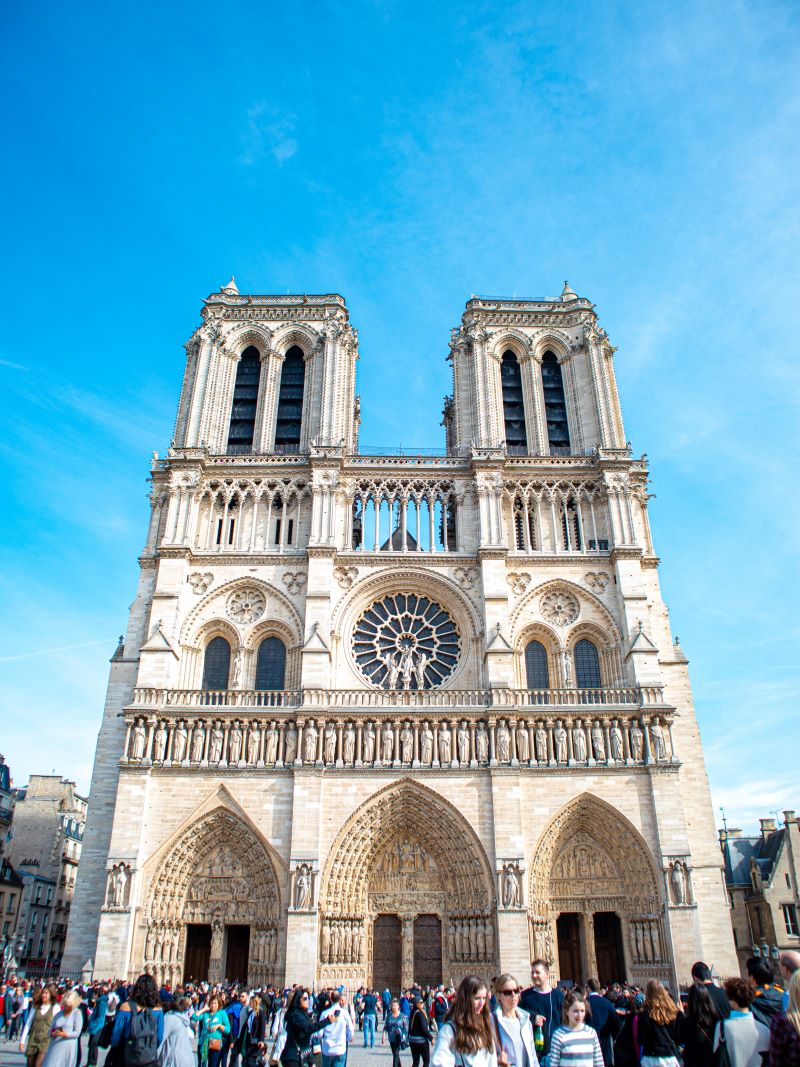
Notre Dame is a historic Catholic cathedral. It is considered one of the finest examples of French Gothic architecture and is famous for its stunning stained glass windows, ornate sculptures, and iconic flying buttresses.
Construction of the cathedral began in 1163 and took nearly 200 years to complete.
Over the centuries, Notre Dame has played an important role in French history, serving as the site of many important events, including the coronation of Napoleon Bonaparte as Emperor of France in 1804.
In 2019, a devastating fire broke out at Notre Dame, causing extensive damage to the building’s roof and spire.
However, thanks to the tireless efforts of firefighters and preservationists, much of the cathedral’s structure and many of its priceless works of art were saved.
Today, Notre Dame is undergoing a major restoration and reconstruction effort, with the goal of returning the cathedral to its former glory.
The cathedral remains an important symbol of French culture and history and continues to attract visitors from all over the world.
Palace of Versailles
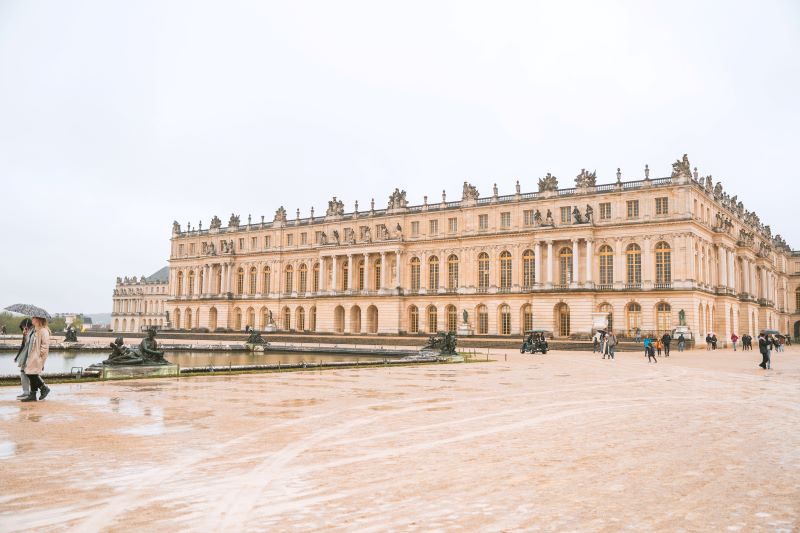
The Palace of Versailles is a historic royal palace located in Versailles, France, about 20 kilometers (12 miles) southwest of Paris.
It was originally built as a hunting lodge for King Louis XIII in the 17th century. Still, it was later expanded by his son, Louis XIV, into a grandiose palace that became the center of French political power and culture.
The palace complex includes the main palace building, the Gardens of Versailles, and a number of smaller buildings and structures.
The palace itself is known for its opulent decor, including ornate sculptures, frescoes, and gilded furniture.
The Gardens of Versailles are equally impressive, featuring expansive lawns, elaborate fountains, and beautifully landscaped gardens.
The Palace of Versailles played a key role in French history, serving as the residence of the French monarchy for over a century.
It was also the site of many important political events, including signing the Treaty of Versailles that officially ended World War I in 1919.
Today, the Palace of Versailles is one of France’s most popular tourist destinations, attracting millions yearly visitors. It is a must-see for anyone interested in history, architecture, or French culture.
Musée d’Orsay
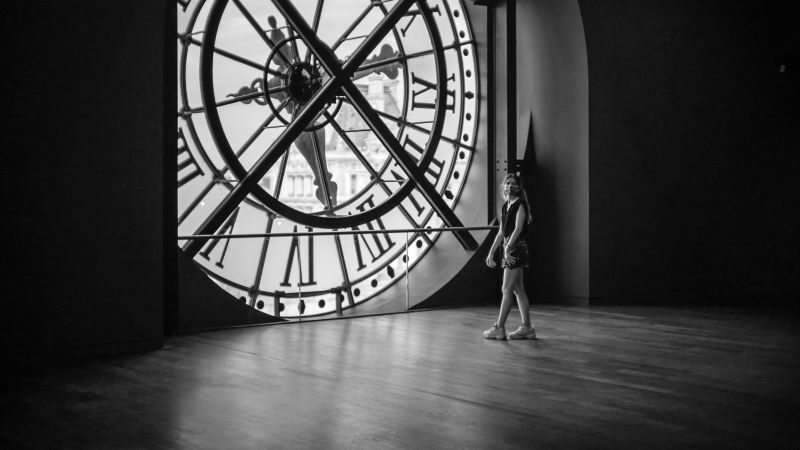
The Musée d’Orsay is a world-renowned museum located on the Left Bank of the Seine River.
It is housed in a stunning Beaux-Arts-style railway station that was built in the late 19th century and is famous for its collection of French art from the mid-19th century to the early 20th century.
The museum’s collections include paintings, sculptures, and other works of art from some of the most important artists of the period, including Vincent van Gogh, Claude Monet, Auguste Rodin, and Edgar Degas.
The museum is particularly well-known for its Impressionist and Post-Impressionist art collection, which includes some of the most famous paintings in the world.
In addition to its permanent collections, the Musée d’Orsay also hosts a number of temporary exhibitions throughout the year, covering a wide range of topics and themes.
The museum is a must-visit destination for anyone interested in art, history, or culture and attracts millions of visitors each year.
Its stunning architecture, impressive collections, and central location make it one of the most popular museums in the world.
Champs-Élysées
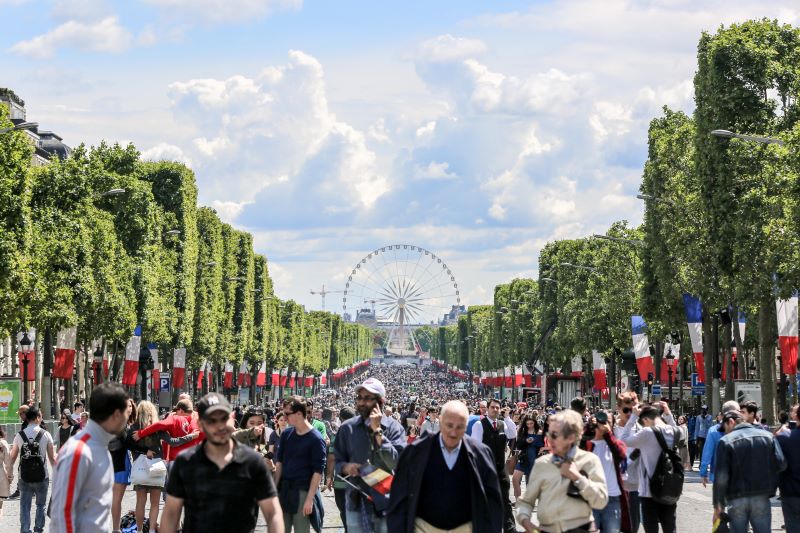
The Champs-Élysées is one of the most famous avenues in the world. The avenue runs for about 1.9 kilometers (1.2 miles) from the Arc de Triomphe to the Place de la Concorde and is lined with trees, luxury shops, restaurants, theaters, and cafés.
The Champs-Élysées is known for its beautiful architecture and historic landmarks, including the aforementioned Arc de Triomphe, which serves as the western endpoint of the avenue.
At the eastern end, the avenue terminates at the Place de la Concorde, which features a large central fountain and an obelisk that was gifted to France by Egypt in the early 19th century.
The Champs-Élysées is also famous for hosting a number of important cultural events throughout the year, including the Bastille Day military parade, the finish line of the Tour de France, and the Christmas market.
Despite being a popular tourist destination, the Champs-Élysées is also an important commercial and business center, home to some of the most prestigious addresses in Paris.
Catacombs of Paris
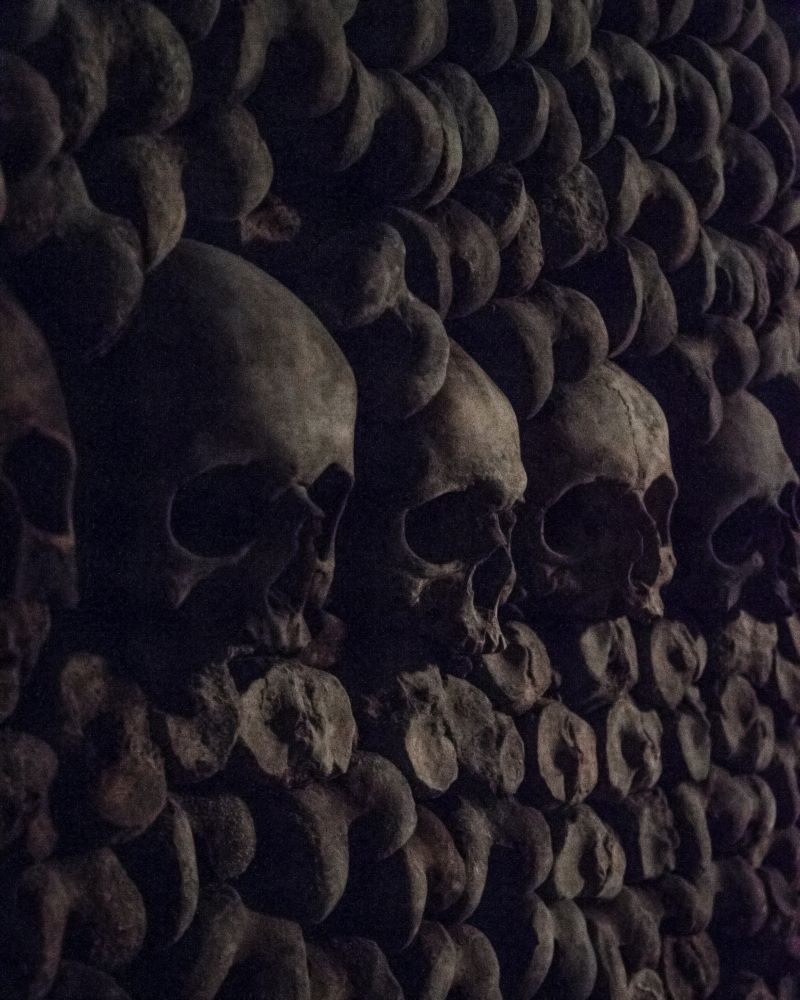
The Catacombs of Paris are a series of underground tunnels and burial chambers located beneath the city of Paris, France.
They were created in the late 18th century as a solution to the problem of overflowing cemeteries. They were used to house the bones of over six million Parisians over the centuries.
The Catacombs are open to the public and offer a unique and fascinating glimpse into the history of Paris.
Visitors can explore the winding tunnels and chambers lined with bones and skulls arranged in macabre patterns and designs.
The Catacombs also house a number of other interesting artifacts and exhibits, including old mining equipment and historical documents related to the tunnels.
Despite their eerie reputation, the Catacombs are a popular tourist destination and a must-see for anyone interested in history or architecture.
However, due to their fragile nature and the potential for overcrowding, it’s important for visitors to respect the rules and regulations set forth by the Catacombs’ administrators.
Île de la Cité
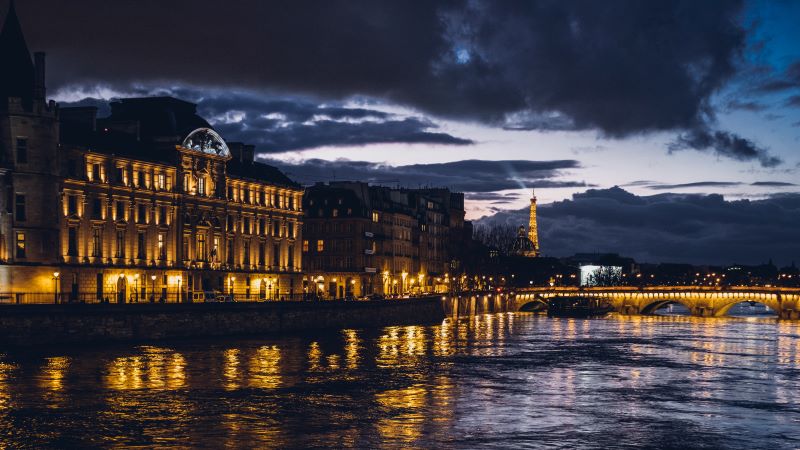
Île de la Cité is an island located in the Seine River in the heart of Paris, France. It is one of the two remaining natural islands in the Seine within the city limits, the other being the Île Saint-Louis.
The island has been an important center of Parisian life since the Gallo-Roman period, and today is home to a number of iconic Parisian landmarks.
Perhaps the most famous of these landmarks is the Notre Dame Cathedral, located on the island’s eastern end.
The cathedral is considered one of the finest examples of French Gothic architecture, and is known for its stunning stained glass windows, intricate sculptures, and soaring spires.
The Île de la Cité is also home to the Palais de Justice, the Conciergerie (a former prison turned museum), and the Sainte-Chapelle, a magnificent 13th-century chapel known for its stunning stained glass windows.
Musée Rodin
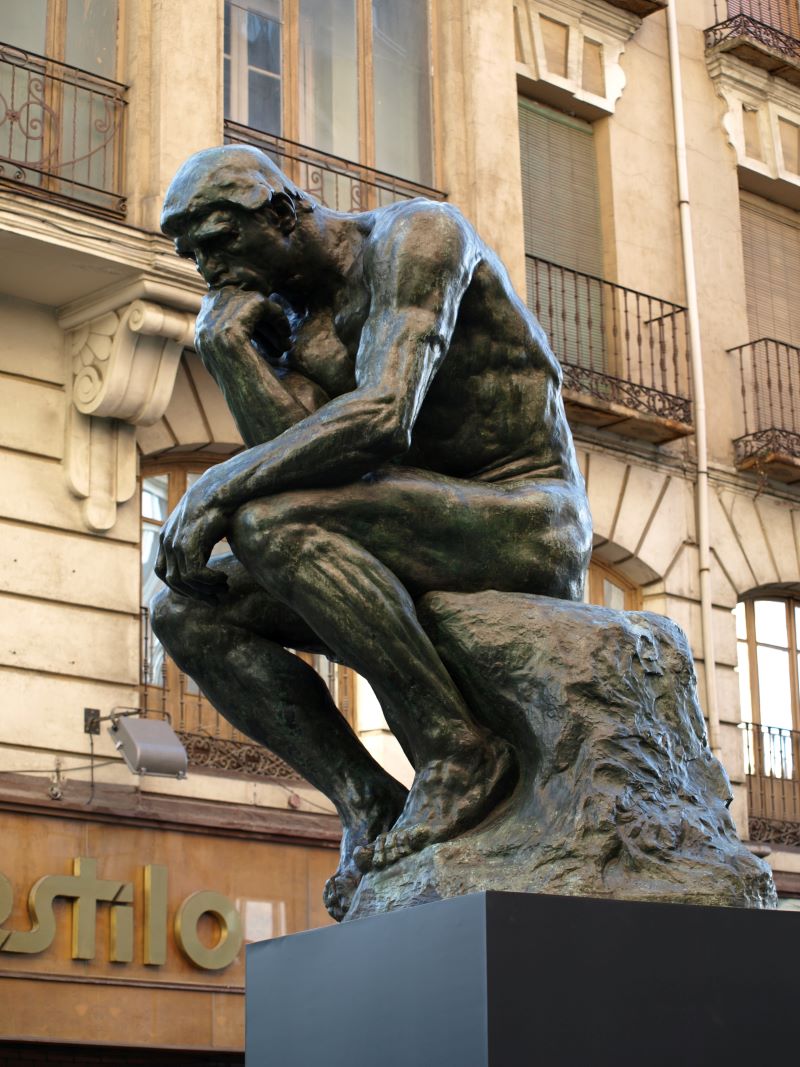
The Musée Rodin is a museum in Paris, France, dedicated to the works of the French sculptor Auguste Rodin.
It is located in the Hôtel Biron, a historic mansion in the 7th arrondissement of Paris, that was once the artist’s residence and studio.
The museum features a large collection of Rodin’s sculptures, drawings, and other works of art, including some of his most famous pieces, such as “The Thinker” and “The Kiss.”
The museum’s gardens are also home to a number of Rodin’s outdoor sculptures, including “The Gates of Hell” and “The Burghers of Calais.”
In addition to its permanent collection, the Musée Rodin also hosts a number of temporary exhibitions throughout the year, showcasing the works of other artists and exploring various themes related to Rodin and his artistic legacy.
Where to Eat in Paris

Paris is a paradise for food lovers, with its many restaurants, cafés, patisseries, and markets. Here are some of the best places to eat in Paris:
- Les Deux Magots: This historic café in Saint-Germain is a popular spot for coffee, pastries, and people-watching. It was a favorite haunt of writers like Hemingway and Sartre.
- Le Comptoir du Relais: This cozy bistro in the 6th arrondissement serves classic French dishes like escargots, steak frites, and crème brûlée.
- L’As du Fallafel: This kosher falafel stand in the Marais is a must-visit for its delicious and affordable falafel sandwiches.
- Berthillon: This famous ice cream parlor on Île Saint-Louis serves some of the best ice cream in Paris, with flavors like raspberry sorbet, salted caramel, and dark chocolate.
- Pierre Hermé: This renowned patisserie has several locations in Paris and is known for its exquisite macarons, as well as other sweet treats like éclairs, tarts, and cakes.
- Le Comptoir General: This quirky café and bar in the 10th arrondissement has a laid-back atmosphere and serves food from around the world, cocktails, and live music.
- Marché d’Aligre: This lively market in the 12th arrondissement has a variety of stalls selling fresh produce, cheese, bread, and other local specialties.
- L’Ami Jean: This Basque restaurant in the 7th arrondissement is famous for its hearty and flavorful dishes, like beef cheek stew, duck confit, and Basque cheesecake.
- Chez L’Ami Louis: This classic bistro in the 3rd arrondissement is known for its rustic ambiance and its signature dish, roasted chicken with fries.
- Le Comptoir de la Gastronomie: This gourmet shop in the 1st arrondissement sells foie gras, truffles, charcuterie, and other French delicacies, as well as serving them in their charming restaurant.
Tips for Traveling in Paris
Plan ahead
Paris is a popular tourist destination, so booking your accommodation and tickets to attractions in advance is a good idea, especially during peak season.
Use public transportation
Paris has an extensive public transportation system, including the metro, buses, and trains, saving you time and money compared to taxis or rental cars.
Walk or bike
Paris is a compact city, and many attractions are within walking or biking distance of each other. You can rent bikes from Vélib’ stations around the city.
Be aware of pickpockets
Paris has its share of pickpockets and scammers like any major city, so be aware of your surroundings and keep your belongings close to you.
Learn some basic French
While many Parisians speak English, it’s always appreciated if you make an effort to speak some basic French phrases, like “Bonjour” (hello) and “Merci” (thank you).
Don’t rush
Paris is a city to be savored, so take your time and enjoy the beauty and culture of the city. Don’t try to cram too much into one day, and take breaks to sit in a café or park and people-watch.
Paris is a city that has something for everyone, whether you’re interested in art, history, food, fashion, or simply soaking up the atmosphere of a beautiful and vibrant city.
From the iconic Eiffel Tower and Notre-Dame Cathedral to the Louvre Museum and the Champs-Élysées, there are countless attractions to explore and admire in Paris.
And beyond the famous landmarks, there are also charming neighborhoods to discover, each with their own unique character and flavor.
So if you’re looking for a destination that combines history, culture, art, food, and romance, look no further than the City of Light.
Paris is a city that has inspired generations of artists, writers, and dreamers, and it continues to enchant and captivate visitors from around the world.
With its rich history, beautiful architecture, and vibrant culture, Paris truly is a must-see destination for any traveler.
Be sure to check out our vlog The Go To Family. Connect with us on Instagram, Twitter, and Pinterest



